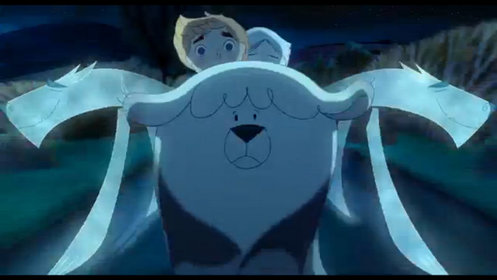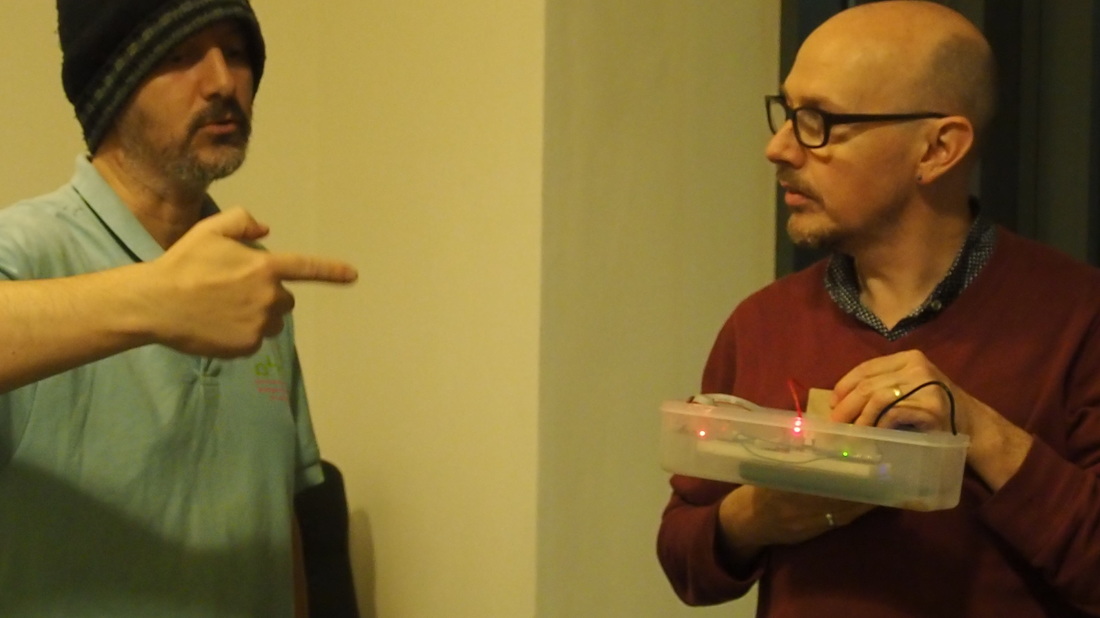For Day Five and Six we worked with Daniel Belasco New. We set out to see if binaurally recorded sounds could act as directional cues, soon discovering the true complexity of that question, but from this process came up with a simple way of layering live ambient sound with site-specific binaural recordings.
We did some simple experiments. Not sure they are highly reliable, but they gave us some info.
Q: Can binaural sound be used as an accurate sound beacon?
A: The jury's still out.
We did some simple experiments. Not sure they are highly reliable, but they gave us some info.
Q: Can binaural sound be used as an accurate sound beacon?
A: The jury's still out.
Experiment One
We recorded different sounds (clapping, clicking and rustling) at eight points of the compass in a quietish room, thinking that this would be a relatively neutral space and the sounds could be isolated more easily. We recorded the sounds at eight points of the compass at a distance of around three metres from 'listener' who stood in the centre. We played the sounds back at random to test whether we could accurately identify the direction they were recorded from. We observed:
We recorded different sounds (clapping, clicking and rustling) at eight points of the compass in a quietish room, thinking that this would be a relatively neutral space and the sounds could be isolated more easily. We recorded the sounds at eight points of the compass at a distance of around three metres from 'listener' who stood in the centre. We played the sounds back at random to test whether we could accurately identify the direction they were recorded from. We observed:
- Sounds at North don’t sound like they are ahead in space, but as if they are on top of your head. Sounds from East and West are do appear in space as they were recorded. Travelling sounds are clearly identified when played back.
- Subtle sounds are more interesting than obvious or exaggerated ones, but apart from footstep sounds, which are only audible on certain surfaces, sounds like breathing and trouser rustling, the physical sounds of someone being present are hard to do subtly and still be audible.
- Hearing binaural recordings for the first time, Neil and I understood that sound recorded in any space will of course take on the acoustics of that place. But maybe it wasn’t important for the sound to be neutral, perhaps it should be recorded on location.
Experiment Two
Next we recorded the sound of falling water played on a smartphone in an outdoor site at eight points of the compass.The site was a park at school pick-up time, a place rich in ambient sound. We also recorded the sound moving from northwest to northeast, southwest to southeast, southwest to northwest and southeast to northeast as well as from North to South and from East to West, passing very close to the listener. Then we played the recordings randomly to each other using the hunter’s headphones and asked the listener to identify the direction.
From these very simple and extremely unrigorous experiments we came up with a few hypotheses and remarks:
Next we recorded the sound of falling water played on a smartphone in an outdoor site at eight points of the compass.The site was a park at school pick-up time, a place rich in ambient sound. We also recorded the sound moving from northwest to northeast, southwest to southeast, southwest to northwest and southeast to northeast as well as from North to South and from East to West, passing very close to the listener. Then we played the recordings randomly to each other using the hunter’s headphones and asked the listener to identify the direction.
From these very simple and extremely unrigorous experiments we came up with a few hypotheses and remarks:
- (Neil) Binaural in situ recordings combine really well with live ambient sound in hunter’s headphones. The porous and 3D nature of this experience means you keep a real sense of the live sounds around you. Easy to do because the technology is already there to use. Score!
- If we need to scan our heads from side to side to accurately gauge the direction of a sound then the sound should move immediately in relation to the way our nose is pointing. Would a gps/compass setup react quickly enough?
- Did we choose the wrong sounds for identifying location? How do sirens work?
- What does the app ‘Oh Music Where Art Thou’ do? It moves a continuous sound. How could you do the same with a 3D binaural sound?
- (Dan) surprised at the accuracy of identifying sounds recorded in situ, listened to in the same place, when the environment is rich in other sounds – easier than identifying the ‘neutral’ sounds recorded indoors
- (Dan) Perhaps we are better at identifying the locations of sounds behind and beside us because it’s more important to locate sounds you can’t see. Perhaps we are worse at identifying sounds in front of us because then vision takes over as dominant sense.
- (Rachel) Perhaps we could try using visuals for what happens in front of us and sound for what happens behind us.
- (Rachel) Could we develop a tool that played two sounds at south east and south west or at east and west that would line up in the participant’s ears when they were facing the right direction like invisible companions, and then when you move off trajectory you lose them (think Cucchulen’s flanking Irish wolfhounds in the film ‘The Song of the Sea’).



